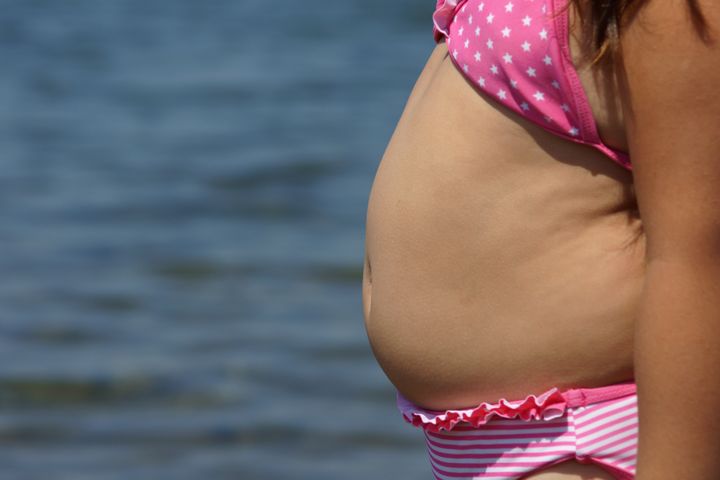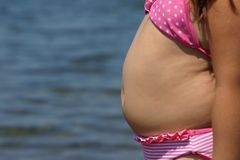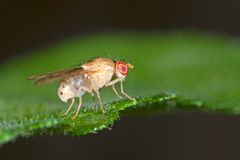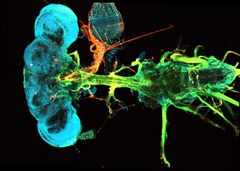Could this explain why childhood obesity leads to early puberty?

Along with an ever-increasing number of obese children around the world, children are entering puberty earlier and earlier. This is particularly true for girls. According to a survey, the onset of puberty occurs on average three months earlier for girls in every decade since 1977.
Early puberty, also known as precocious puberty, can leave children with psychological and social problems, as well as causing them to be shorter than they would otherwise be. Studies also suggest that early puberty can increase the risk of developing cancer, diabetes, depression and cardiovascular disease later on in life.
While various reasons have been speculated upon, there are no clear scientific explanations for early puberty. Nevertheless, the link between childhood obesity and early puberty has long been apparent. The more body fat a child has, the greater their likelihood of beginning puberty at an earlier age. However, no one has been able to fully explain the connection. Now, a team of research scientists from the University of Copenhagen has found what may be part of the answer in a so-called “model organism” that is genetically similar to humans – namely, in Drosphila fruit flies.
"Cholesterol is a fat. So, if you’re overweight, your body fat harbors more cholesterol. And it turns out that higher cholesterol is a key to earlier maturation in the fruit fly, our model organism. Our results demonstrate that the amount of cholesterol in adipose tissue and in certain support cells in the brain affects the growth of fruit flies and controls when they reach maturity," explains Professor Kim Rewitz, a lead author of the study, now published in the renowned journal Current Biology.
He adds:
"And because the systems in fruit flies and humans are remarkably similar, we believe that the same may apply to humans – i.e., that cholesterol in adipose tissue may help explain the connection between childhood obesity and early puberty."
Puberty begins when the body reaches a certain weight
Professor Rewitz and the Department of Biology research team tested their hypothesis by putting fruit fly larvae on a "fatty diet" of cholesterol-packed foods. The development of these larvae was compared with larvae that hadn’t received the high cholesterol diet.
"We observed that larvae on the cholesterol diet consistently grew faster and entered “puberty” sooner. It turned out that the increase of cholesterol stored in the fruit flies’ body fat and support cells in the brain increases the release of growth hormones that cause the animals to grow faster. Growth and size is a signal to the body for when to trigger puberty," says Kim Rewitz.
The professor explains that in fruit flies, the signal to undergo maturation is when their weight and amount of body fat reach a certain point during development:
"In one way or another, animals need to know when they're large enough to reach sexual maturity and be able to reproduce. Organisms have a checkpoint in their development that they must pass to enter puberty known as 'Critical Weight'. This checkpoint is found in fruit flies and most likely in humans too. This means that both fruit fly larvae and children probably need to reach a certain body size and have a certain amount of fat stored to enter puberty. What we’ve found is that the amount of cholesterol stored in body fat plays an important role in this process."
Professor Rewitz continues:
"We see that fruit flies have a mechanism that senses how much cholesterol is stored in their body fat and support cells in the brain. At a certain point, the system then sends a signal to the brain centers that triggers maturation by producing steroid hormones. In humans, these correspond to testosterone and estrogen," says Kim Rewitz.
However, it also means that if the amount of stored cholesterol increases, the organism can actually fail to estimate its overall size accurately, so that it hits the critical weight checkpoint earlier than it normally would:
"Because overweight children have more body fat, they will probably also have stored more cholesterol at an earlier point in their development. So, if our assumption that the same mechanism exists in humans holds true, it could help to explain early puberty in obese children," says the researcher.
Cholesterol may influence cancer as well
Professor Rewitz hopes that other researchers will follow up on this study with models in mammals and eventually humans.
"Early puberty is a growing problem around the world. Now that we might have an important part of the explanation for how obesity and early puberty are connected, we may be able to better establish the great significance that obesity has for childhood development. Thereafter, we can see whether new ways can be found to address the problem. For the time being, lifestyle changes are probably the best solution," says Kim Rewitz.
Professor Rewitz and his research colleagues have now started to look deeper into the significance of the cholesterol mechanism for cancer development. Their research also shows that, via the same mechanism, cholesterol can activate cell growth that leads to cancer.
FACT BOX: EARLY PUBERTY IN DENMARK
- In Denmark, we consider early puberty to be when girls begin to develop breasts or pubic hair before the age of eight or menstruate before the age of ten, and when boys show signs of enlarged testicles or pubic hair before the age of nine.
- According to research from Denmark’s Rigshospitalet, Danish girls were roughly eleven years old on average when they began puberty in 1991. By 2005, they were just slightly over the age of ten.
FACT BOX: ABOUT THE STUDY
- The mechanism discovered by the Department of Biology researchers works by allowing fruit flies to sense the amount of cholesterol in their body fat and so-called glial cells (support cells) in the blood-brain barrier. An increase in cholesterol increases the release of so-called insulin-like growth factors, which thereby increases the animal growth. This leads to earlier sexual maturation.
- Getting a grasp of which mechanisms ensure that a person reaches sexual maturity at a certain point has been a major unanswered question in biology for a long time. Through a number of fruit fly studies in recent years, researchers from the Department of Biology have gotten much closer to understanding the system that controls when animals reach sexual maturity.
- The study results are published in the renowned journal, Current Biology.
- The researchers behind the study are Michael J. Texada, Mette Lassen, Lisa H. Pedersen, Takashi Koyama, Alina Malita and Kim Rewitz, all of whom are from the Section for Cell and Neurobiology at the University of Copenhagen’s Department of Biology.
Keywords
Contacts
Kim Rewitz
Professor
Department of Biology
University of Copenhagen
kim.rewitz@bio.ku.dk
+45 35 33 01 55 / +45 61 65 60 26
Maria Hornbek
Journalist
Faculty of Science
University of Copenhagen
maho@science.ku.dk
+45 22 95 42 83
Images
About Københavns Universitet - Det Natur- og Biovidenskabelige Fakultet
 Københavns Universitet - Det Natur- og Biovidenskabelige Fakultet
Københavns Universitet - Det Natur- og Biovidenskabelige FakultetBülowsvej 17
1870 Frederiksberg C
35 33 28 28https://science.ku.dk/
Det Natur- og Biovidenskabelige Fakultet på Københavns Universitet – SCIENCE – er landets største naturvidenskabelige forsknings- og uddannelsesinstitution.
Fakultetets væsentligste opgave er at bidrage til løsning af de store udfordringer, som vi står overfor i en verden under hastig forandring med øget pres på bl.a. naturressourcer og markante klimaforandringer - både nationalt og globalt.
Subscribe to releases from Københavns Universitet - Det Natur- og Biovidenskabelige Fakultet
Subscribe to all the latest releases from Københavns Universitet - Det Natur- og Biovidenskabelige Fakultet by registering your e-mail address below. You can unsubscribe at any time.
Latest releases from Københavns Universitet - Det Natur- og Biovidenskabelige Fakultet
Saving the Asian Unicorn – If It Still Exists6.5.2025 09:48:24 CEST | Press release
The saola, an antelope-like bovine, is one of the world’s rarest and most endangered mammals. In fact, it hasn’t been observed in over 10 years. Researchers from the University of Copenhagen, in collaboration with Vietnamese scientists and an international team of researchers, have for the first time mapped the saola’s complete genome, and they have used that knowledge to estimate the chances of saving it – if it still exists.
Sådan redder vi den asiatiske enhjørning – hvis den altså findes6.5.2025 07:07:00 CEST | Pressemeddelelse
Den antilopeagtige okse, saolaen, er et af verdens mest sjældne og mest truede pattedyr – faktisk er den ikke blevet set i over 10 år. Forskere fra Københavns Universitet har i samarbejde med vietnamesiske forskere som de første kortlagt saolaens gener, og den viden har de brugt til at beregne sandsynligheden for, at vi kan nå at redde den – hvis den altså stadig findes.
Saving the Asian Unicorn – If It Still Exists5.5.2025 17:00:00 CEST | Press release
The saola, an antelope-like bovine, is one of the world’s rarest and most endangered mammals. In fact, it hasn’t been observed in over 10 years. Researchers from the University of Copenhagen, in collaboration with Vietnamese scientists and an international team of researchers, have for the first time mapped the saola’s complete genome, and they have used that knowledge to estimate the chances of saving it – if it still exists.
Bakterier bruger gammelt krigstrick til at overliste vira: Kan hjælpe med at bekæmpe ’superbugs’30.4.2025 07:30:00 CEST | Pressemeddelelse
Forskere har opdaget en ny type immunforsvar i coli-bakterier, der vender en virusinfektion mod vira selv. Systemet er opkaldt efter den kinesiske militærstrateg Kongming som var berømt for at bruge fjendens våben til at besejre dem. Opdagelsen kan bruges i udviklingen af fremtidige bioteknologiske værktøjer og måske som et alternativ til antibiotika til at bekæmpe multiresistente bakterier.
Nyt forskeruddannelsesprogram skal udklække fremtidens kvantespecialister29.4.2025 10:24:11 CEST | Pressemeddelelse
Med støtte fra Villum Fonden opretter Københavns Universitet og DTU et nyt forskeruddannelsesprogram, der skal være med til at sikre, at Danmark kan bevare sin styrkeposition inden for kvanteforskning i fremtiden.
In our pressroom you can read all our latest releases, find our press contacts, images, documents and other relevant information about us.
Visit our pressroom



